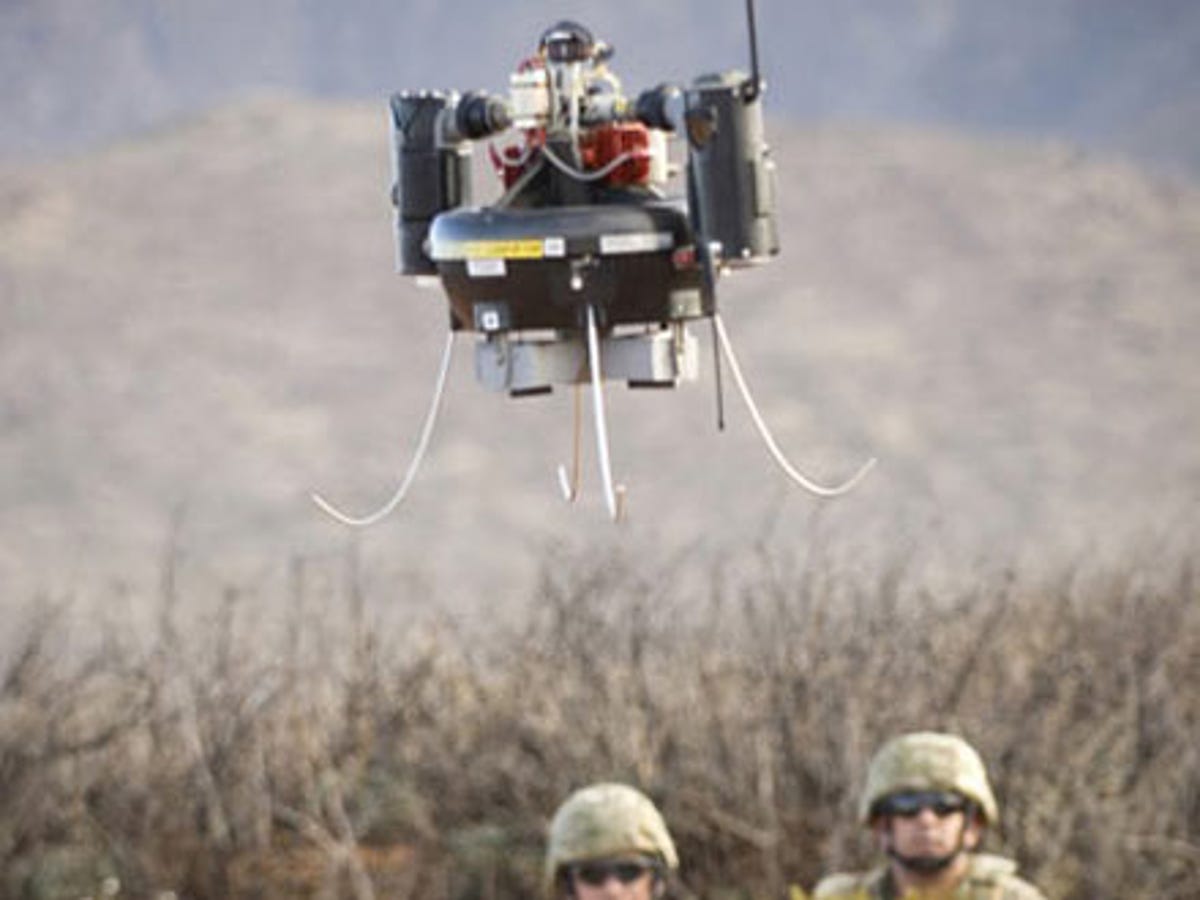Photos: The Army's vision for soldier tech
The Future Combat Systems project lays out a fully networked force of robots, sensors and smarter vehicles. But getting there is slow going.

The U.S. Army tends to be a poor cousin among Defense Department kin when it comes to high-tech systems; the big-bucks, high-profile technology programs tend to accrue to the Navy and the Air Force. It's also looking to take advantage of developments in areas from robotics to high-speed networks.
Enter the
While the timeline for developing the FCS systems extends well into the next decade, the Army hopes to get some components deployed as early as fiscal year 2008, which starts in October. And therein lies a very important rub.
The Class I UAV on display in Washington, D.C., in mid-May, just as Congress was entering into its consideration of the National Defense Authorization Act for fiscal 2008. The total FCS budget request for the upcoming fiscal year: $3.7 billion. (The total eventual cost is expected to be around $162 billion.) But the program has drawn criticism both for its cost and for its technological feasibility--key questions being not just whether individual components will work as expected, but how well they'll actually accomplish the FCS goal of working together in networked harmony.
At the FCS event in May, a soldier demonstrates the operation of the Class I UAV. The aerial vehicle would locate targets that would then be engaged by an affiliated non-line-of-sight (NLOS) weapon.
The House of Representatives was the first chamber of Congress to consider the spending bill, which sets the overall Pentagon budget at just under $650 billion. In those deliberations, the FCS budget was cut by approximately $876 million, according to press reports. But when the Senate Armed Services Committee took up the measure late last week, it restored that funding--and added an additional $90 million for armed robotic vehicles, along with $25 million for other systems. The bill is expected to go before the full Senate in early June.
In the simulator exercise, three stations are linked on the FCS Network to allow operators to coordinate attacks on the enemy. The Army says the program has delivered more than 5 million lines of software code.
A simulated enemy tank is engaged--and destroyed--by a non-line-of-sight FCS weapon.
Not all tracked vehicles are as big as a tank or artillery piece. This little robot, dubbed the Small Unmanned Ground Vehicle, is yet another component of the FCS program. Here, it keeps tabs on comings and goings just outside the Pentagon during the May demonstration of FCS gear. The remote operator views video from the SUGV in a small screen embedded in a pair of goggles.
Earlier this year, this SUGV helped a pair of soldiers clear a building during an evaluation exercise. The robotic vehicles can keep soldiers a step or two removed from dangerous situations, whether checking out the interiors of structures or detecting explosive devices. Variations on the
This time, it's the soldiers giving the SUGV a hand. Note the familiar styling of the controller held by the soldier at left.
A closer look at the controller and the operator's goggles, as well as the tracks on the SUGV.
The Army hasn't had much use for pack mules in many years, but it does see a role for MULEs--multifunctional utility/logistics and equipment vehicles. The 2.5-ton unmanned devices would come in three main configurations: to transport gear for infantry squads; to detect, mark and neutralize land mines; and to provide reconnaissance, surveillance and target acquisition services.
Another key part of the FCS Network will be unattended ground sensors. Several of them were on display at the May demonstration at the Pentagon. The devices could be equipped with acoustic, infrared and seismic sensors. They are among the FCS technologies likely to be spun out for deployment in 2008.
This image shows a remote sensor, developed by Textron Systems, in the field.

